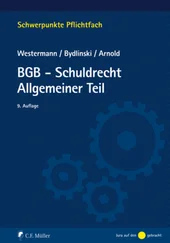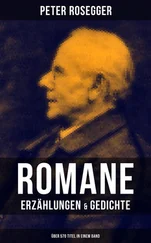He laid out the sequence in his mind. They were feeling the P waves, which had the strongest velocity and speed of all seismic waves and were the first waves a seismograph recorded. They resembled sound waves and could boom like thunder when they hit the surface. They spread out as they moved up through the ground, pushing and pulling at the rock.
The slower, harder-hitting S waves would arrive next, a series of violent sideways movements that sheared the rock at right angles and could knock hell out of the ground and anything standing on it.
The P and S waves were called body waves because they originated in the body of the rock deep underground. They moved up from the hypocenter of the earthquake to the surface.
A second group of waves, surface waves, followed the body waves. These were the real killers. Slower moving than the P or S waves, they were the last to be picked up by a seismograph. They were named after the two men who discovered them: Love, a mathematician, and Rayleigh, a physicist. Their motion, which resembled waves rippling across a lake, was confined to the ground surface.
The Love wave moved the ground from side to side in a powerful whipsawing action that destroyed the foundations of buildings. They arrived before the Rayleigh waves, which resembled waves rolling across the ocean. The Rayleigh wave made the ground billow, rocking it up and down in a series of rapid undulations.
The two groups of waves, body and surface, created an incredibly powerful one-two knockout punch.
Atkins’ only thought was to get farther away from the wrecked train. Some of those cars were probably loaded with oil, natural gas, or some other inflammable chemical.
Supporting Elizabeth by the arm, Atkins managed to stumble forward a few steps before the next strong shake knocked them down again.
“Try to crawl,” he said.
The ground was still moving in sharply defined waves. These were probably S waves, Atkins thought. The freight cars were swinging out in an arc, fanning back and forth in rhythm to the ground’s wildly oscillating surface motions. Atkins glanced back just as a boxcar whipsawed across the road and flattened the Blazer.
The ground shaking had intensified. The rapid back-and-forth undulations were remarkably powerful.
Atkins smelled something. Three oil tanker cars were burning. Black smoke climbed high over the trees.
Another tanker blew in a bright flash of fire.
“We’ve got to get away from here before the whole thing goes up,” Atkins said.
Supporting each other, sometimes crawling, they moved away from the wrecked train. The ground was still heaving, the jolts so severe and frequent it was impossible to stand.
“Listen,” Atkins said.
A new sound.
The earth had started to rip apart in a fissure that cut across the railroad tracks and swept up into Mayfield. Atkins had seen the ground do the same thing three days earlier during the magnitude 7 quake, but it didn’t compare with this. As rocks moved and sheared apart deep in the ground, a huge trench was forming, opening up right before their eyes. As the earth split open, the noise was deafening.
Atkins tried to get his bearings. He looked toward the town and saw the church spire rocking back and forth, silhouetted against the black sky. Worried the earth was going to rip open right under them, he got back on his feet and helped Elizabeth stand up. Just as they were getting used to the left-right ground movement, the seismic waves changed direction. The shaking, stronger than ever, shifted to right-left. Atkins guessed they were starting to feel the surface waves. It was hard to distinguish among the different waves when you were caught up in an actual quake.
“John, look!” Elizabeth said. She’d dropped to one knee to keep her balance.
He turned as the ground broke open under the upended train and swallowed a string of boxcars.
Four or five cars just disappeared.
The foul odor that poured from the opening smelled like sulphuric acid.
Then, as abruptly as it had begun, the earthquake was over.
The fissure slammed closed, the sound reminding Atkins of an avalanche only more abrupt, the rumble of snow crashing down a mountainside. It left a jagged scar with a two-foot shelf, or offset. It was as if a carving knife had ripped long slashes in the ground.
Atkins’ wristwatch showed the shaking had lasted four minutes and five seconds. Elizabeth agreed with that time. If it was anywhere near accurate, it had to be a record.
The main thrust, Atkins guessed, had driven one side of the fault sharply upward. He figured this “hanging wall” was considerably higher than the other side of the fault.
“I think there was some strike-slip displacement,” Elizabeth said. This was horizontal, or back-and-forth, movement along the fault. The direction of the slip had followed a left-lateral motion, meaning each side of the fault had moved left relative to the other.
Freight cars and tankers littered the tracks. Some were piled on top of each other, crushed and flattened. Another tanker blew up, an orange-white ball of fire shooting high into the sky.
Keeping their distance, Atkins and Elizabeth cautiously moved around the end of the train. They needed to get to the Explorer, which Atkins had left parked at the Mayfield High School about five hours earlier. It was only a few blocks away.
NEAR KENTUCKY LAKE
JANUARY 13
2:15 A.M.
LAUREN MITCHELL AND BOBBY MET SHERIFF LOU Hessel at an all-night convenience store just outside Gilbertsville. The resort town was three miles down the Tennessee River from Kentucky Dam. Just below the dam, the Tennessee was more of a canal than a river. It broadened considerably at Gilbertsville, where it made a long, graceful curve before heading downstream toward its juncture with the Ohio River.
Hessel had known Lauren and her parents for years. In his early fifties, he had thinning black hair, high cheekbones, and gaunt cheeks. He didn’t like wearing a uniform and was dressed in a ski sweater, jeans, and boots. He and Lauren had attended high school together. They’d even dated a few times back then, nothing very serious, an occasional movie in Paducah or a boat trip on Kentucky Lake. Hessel’s wife, Judy, was a good friend of Lauren’s.
The sheriff listened quietly and sipped coffee from his thermos as Lauren described what Atkins and Elizabeth had seen inside the dam and her own close call out on the lake. He’d driven over from Mayfield as soon as she’d called. He’d never seen her like this, almost frantic.
“We’ve got to let people know the dam’s in danger of failing!” Lauren was practically shouting in his face. “They won’t have a chance…”
The sheriff glanced at his watch. It was about 2:15 A.M.
“You two get in the car,” he said. “We’ll start right here in Gilbertsville. Then we’re going to do some hard driving. We’ll head down to Reidland, then cut across the Highway 101 bridge into Paducah. We’ve got some ground to cover. I know every deputy, volunteer fire chief, and ambulance dispatcher in two hundred square miles. They’ll help us get the word out. We gonna raise some hell.”
Bobby got in the back of the patrol car and Lauren had just opened the passenger-side door when she noticed the lights on the parking lot. The poles had started to sway.
“Look at that,” Hessel said.
Then the ground exploded. Knocked off her feet, Lauren fell across the hood of the car. Another violent shake sent her staggering backward. She landed hard on her side.
The sheriff tried to get out to help, but the car was rocking up and down with such force he was pinned to his seat. The plate-glass window of the convenience store shattered. A young woman working there stumbled out the doorway, screaming and holding her hands to her ears, trying to blot out the thunder coming from deep in the earth. The parking lights were swaying so hard the poles snapped off at the base.
Читать дальше












